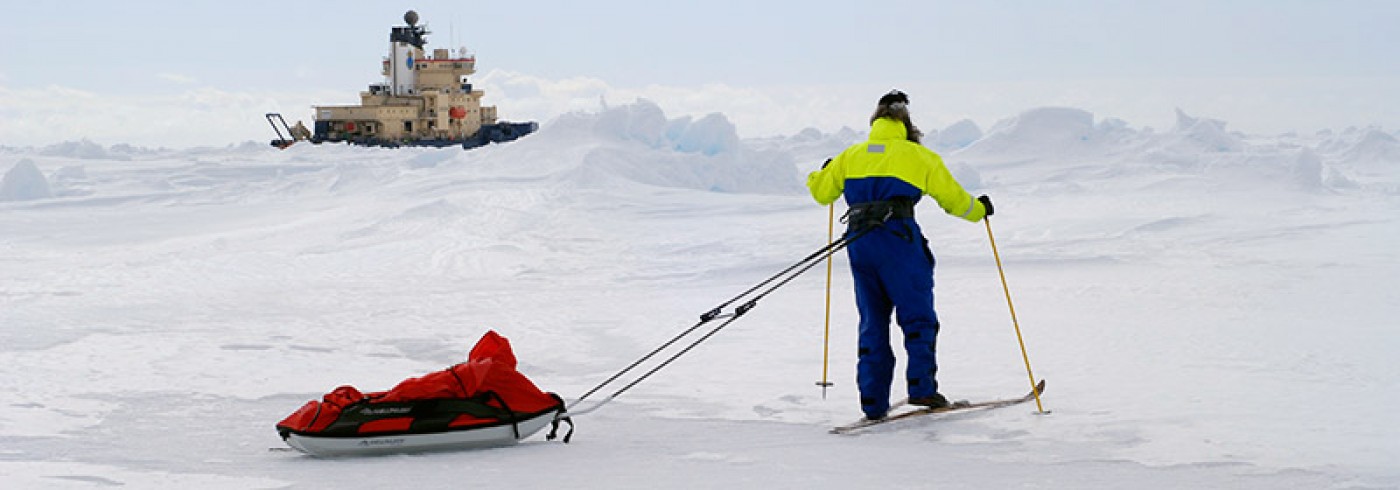Climate change and predatory invasion of the Antarctic marine environment
26 November 2010 - 17 January 2011
The invasive predatory King Crab (Lithodidae) on the slope near the Antarctic Peninsula, captured by the SeaBed camera.
Global climate change is altering polar marine ecosystems through rising temperatures. In the Southern Ocean, the physiological barriers to invasion by predatory crabs are disappearing. This could have catastrophic implications for the endemic benthic fauna of the Antarctic shelf, which have evolved in an environment without such predators and therefore lack physical defences.
The goal of this collaborative research project involving scientists from Sweden, the usa, and the uk is to assess the status of this predatory invasion and its effect on the benthic shelf fauna of Antarctica. The specific aims are:
- to assess the distributions of larvae, juveniles, and adults of invasive crab predators on the slope and shelf of western Antarctica
- to identify mesoscale oceanographic features that can facilitate the invasion of predatory larvae
- to document possible changes in the endemic benthic shelf fauna following the invasion of predators.
These research questions were addressed using three separate sample approaches. First, we assessed the presence of crab larvae in the water column by means of plankton tow nets at discrete depths using the multiple opening and closing net with an environmental sensing system (mocness). By comparing the vertical distribution of the larval community with vertical current profiles, we hope to identify oceanographic features that can mediate the planktonic invasion of crabs, and hence areas in the western Antarctic vulnerable to invasion. Second, we used an epibenthic sledge and a small dredge to sample larvae and juveniles close to the bottom, specifically targeting king crabs. Third, we used an autonomous underwater vehicle to image the bottom community, providing density estimates of crabs and benthic fauna.

The SeaBed autonomous underwater vehicle used to photographically sample the fauna on the sea floor. Photo: Stephanie Vos
The bottom fauna associated with crab populations will be compared quantitatively with the macrofauna in crab-free areas at the same depths to determine the current impact of the crabs as well as the benthic components most vulnerable to predation. This will also provide important baseline data on the benthic community before a possible invasion. The sampling was primarily carried out off the Antarctic Peninsula, where adult kingcrabs have been previously observed on the continental slope, and in the Amundsen Sea, where very little is known about the benthic community.
The data are being analyzed, but preliminary results indicate a high abundance of both juvenile and adult king crabs on the slope of the Antarctic Peninsula.
We plan to publish our results in scientific peer-reviewed journals. Findings will also be communicated through websites, public lectures, and conference presentations.







